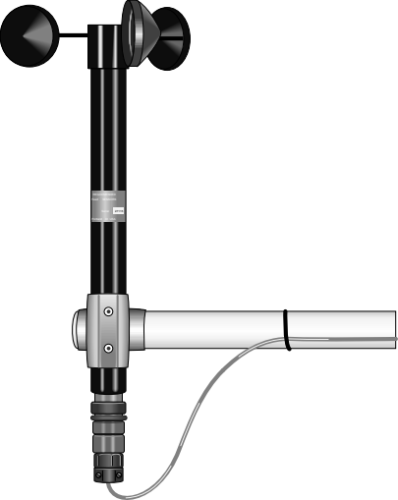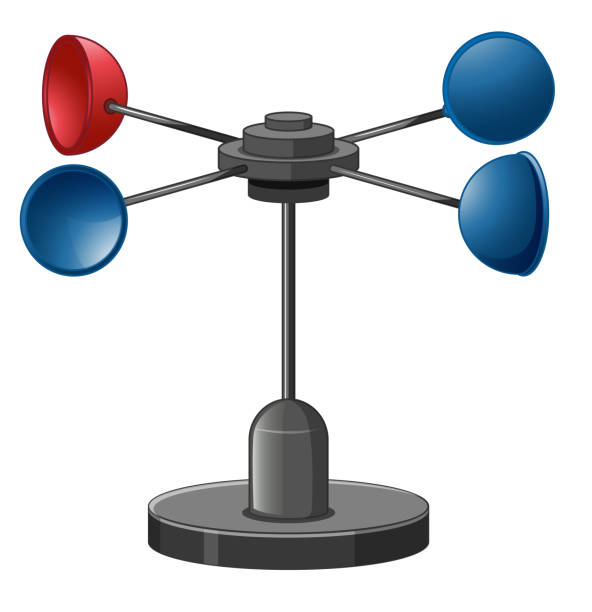Comparing Digital and Mechanical Anemometers: Which is Right for You?
Comparing Digital and Mechanical Anemometers: Which is Right for You?
Blog Article
Exploring the Features and Advantages of Anemometers for Weather Condition Fanatics and Specialists
From cup anemometers to sonic anemometers, each kind brings its distinct collection of applications and benefits, losing light on numerous facets of climatic problems. As we delve right into the functions and benefits of anemometers, a much deeper understanding emerges not only of dominating weather sensations however additionally of the more comprehensive ramifications for sectors like wind power production and ecological study.
Value of Anemometers in Weather Surveillance
Anemometers play an important function in weather surveillance by supplying precise dimensions of wind rate, assisting in forecasting and understanding weather patterns. These instruments, ranging from conventional mug anemometers to contemporary ultrasonic anemometers, are crucial for meteorologists, researchers, and weather lovers alike.

Sorts Of Anemometers and Their Applications
With the crucial role anemometers play in weather condition tracking and forecasting, understanding the numerous kinds of these tools and their applications becomes vital for experts and enthusiasts in the area. One of the most typical sorts of anemometers consist of mug anemometers, vane anemometers, hot-wire anemometers, and ultrasonic anemometers. Cup anemometers contain 3 or four cups placed on horizontal arms that rotate with the wind, gauging its rate. Vane anemometers, on the various other hand, use an openly revolving vane to line up with the wind direction, giving both wind rate and direction measurements. Hot-wire anemometers operate based upon the principle of convective warmth transfer, where the cooling impact of the air circulation is determined to identify wind speed. Ultrasonic anemometers utilize ultrasonic sound waves to compute wind rate and direction properly.
Each kind of anemometer has its distinct advantages and applications. Cup anemometers are suitable and durable for basic weather tracking, while vane anemometers are preferred for directional measurements. Hot-wire anemometers are sensitive to reduced air velocities, making them ideal for interior environments. Ultrasonic anemometers are non-intrusive and use high accuracy, commonly used in research study and specialized climate monitoring applications. Recognizing the attributes and applications of each kind of anemometer is vital for selecting the most proper tool for particular climate keeping track of demands.
Advantages of Using Anemometers in Forecasting
In weather forecasting, the application of anemometers offers indispensable advantages for improving the accuracy of weather forecasting. Anemometers gauge wind rate and instructions, giving crucial information for forecasting climate his response patterns. By integrating wind data into projecting models, meteorologists can much better recognize the motion of weather condition systems, anticipate adjustments in climatic conditions, and issue a lot more precise projections.
Moreover, anemometers play an essential function in examining prospective weather hazards. Monitoring wind rates assists forecasters predict extreme weather occasions such as cyclones, twisters, and wintertime Full Report storms with better accuracy. This very early warning system makes it possible for authorities to provide timely signals and execute necessary precaution, reducing the dangers to life and building.
Furthermore, anemometers aid in enhancing renewable energy manufacturing. By evaluating wind patterns, meteorologists can recognize suitable areas for wind farms and forecast energy outcome, adding to the efficient generation of wind power.

Anemometers in Wind Power Manufacturing
Provided the critical function anemometers play in supplying exact wind data for weather condition projecting and hazard evaluation, their value encompasses the realm of wind energy production. Anemometers are necessary tools in the field of wind energy, where the measurement of wind speed and instructions is vital for determining the feasibility and effectiveness of wind turbine installments. By accurately measuring wind speeds at varying heights, anemometers help optimize the placement and layout of wind generators to make best use of power result.
In wind farms, anemometers are tactically put to accumulate real-time wind data that is utilized to evaluate the prospective power production of a site. This data contributes in figuring out the economic feasibility of wind energy tasks and in projecting power generation to make sure grid stability. Additionally, anemometers aid in keeping an eye on wind problems to optimize wind turbine performance, prevent damage from high winds, and make certain the safety and security of employees functioning in the area of wind generators.
Enhancing Weather Condition Recognizing With Anemometers

Anemometers play a key role in enhancing our understanding of microclimates. These localized weather can vary significantly from broader local projections, making it vital to have exact information for certain locations. anemometer. By tactically putting anemometers in various locations, scientists can collect in-depth info on how wind acts in various terrains, urban environments, or bodies of water
In addition, anemometers add to enhancing weather forecasting models by offering real-time data on wind actions. This info is especially valuable for forecasting serious weather events, maximizing farming methods, and sustaining markets like air travel and maritime navigating. On the whole, anemometers are very useful instruments that allow us to dig much deeper right into the intricacies of weather systems, inevitably causing even more better-informed choices and precise forecasts.
Final Thought
Finally, anemometers play an essential function in weather tracking and projecting by determining wind rate and direction. They are vital devices utilized by climate enthusiasts and professionals to gather precise data for forecasting weather condition patterns and assessing potential influences. Anemometers also have applications in wind energy production, more highlighting their importance in both weather forecasting and renewable energy markets. Overall, anemometers add to enhancing our understanding of weather condition sensations and boosting forecasting abilities. anemometer.
From mug anemometers to sonic anemometers, each kind brings its distinct set of applications and benefits, losing light on various aspects of atmospheric conditions. These instruments, varying from typical mug anemometers to modern ultrasonic anemometers, are necessary for meteorologists, scientists, and climate fanatics alike. The most common kinds of anemometers consist of mug anemometers, vane anemometers, hot-wire anemometers, and ultrasonic anemometers. Mug anemometers are suitable and robust for general weather monitoring, while vane anemometers are favored for directional measurements. Anemometers are important instruments in the area of wind energy, where the measurement of wind speed and instructions is crucial for identifying the feasibility and efficiency of wind turbine installations.
Report this page